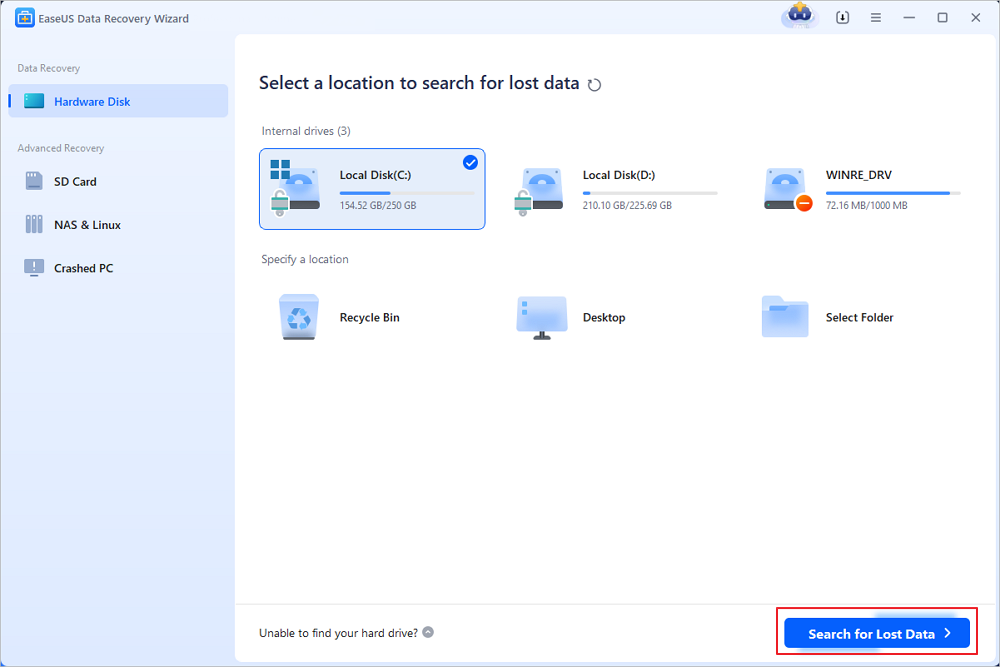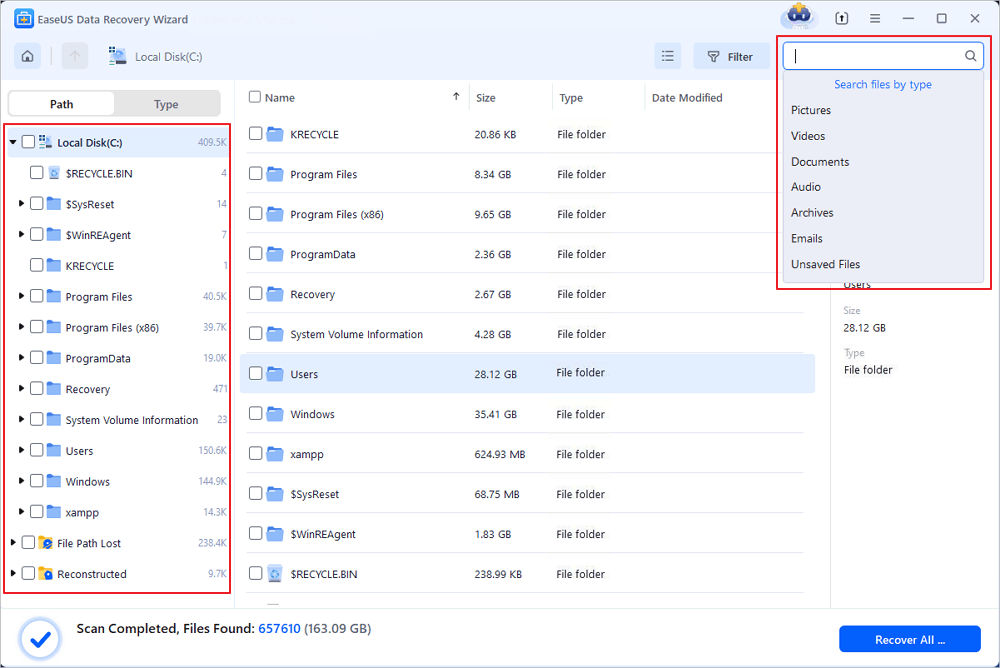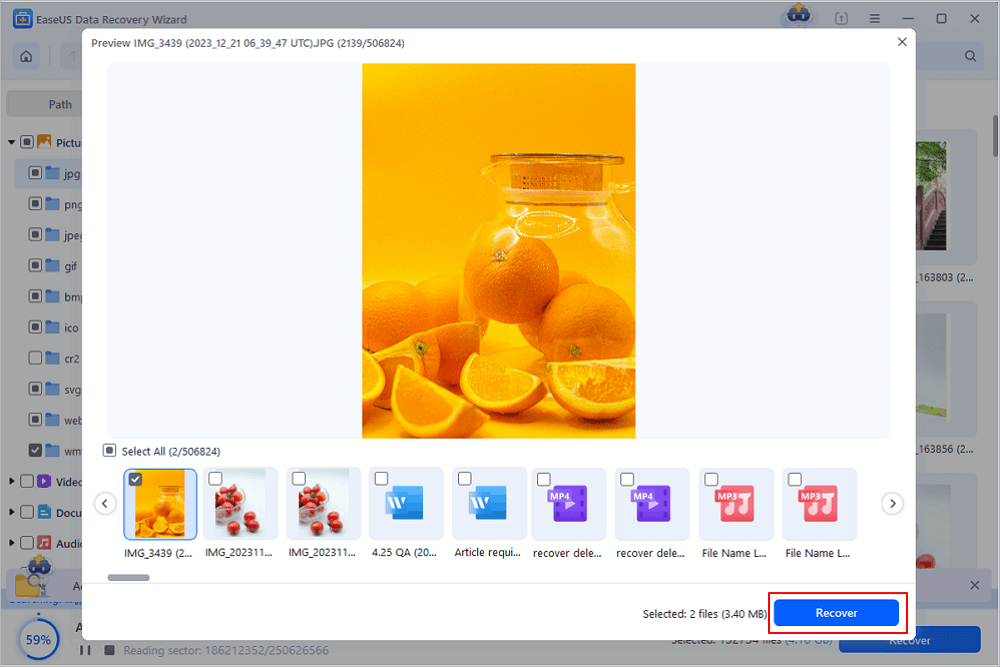Featured Articles
- 01 Decrypt File Online
- 02 Folder Lock Forgot Password
- 03 EFS Decryption Tool
- 04 Unlock PDF Without Password
- 05 How to Remove Password from Excel
- 06 How to Remove Bitlocker
- 07 Bitlocker Recovery Key Lost
- 08 How to Decrypt Excel File Without Password
- 09 Unlock Disk Windows 10
- 10 Unlock USB Drive
- 11 Unlock SD Card Android
To decrypt a file, you'll need a password or decryption key, and right-click the encrypted file, go to Properties > Advanced, and uncheck "Encrypt contents to secure data", then click OK and Apply. And you can encrypt files in the same way or turn on BitLocker encryption in Windows to protect your files and folders
How to Decrypt a File in Windows 11/10/8/7
Q1: "I recently encrypted some of my files in Windows 10 and kept my encryption key in my Documents folder in C drive. I reinstalled Windows OS the other day, and the encryption key was lost due to formatting. Can I decrypt the file without the certificate?"
Q2: "Unknown viruses encrypted all files and folders on my USB pen drive. I was threatened to pay Bitcoin to recover encrypted files, which I don't want to. I need a way to decrypt encrypted files without a password."
In this article, we will provide a full guide on how to decrypt a file online without a key. And, if your files are encrypted by ransomware, use the robust data recovery tool and get your files back with a click.
How to Open Encrypted Files Without Passwords
| 📖Expert advice: When attempting to decrypt a password-protected file, always use trusted tools in a secure environment to avoid permanent data loss or potential malware risks. |
Usually, we should decrypt a file with a password, and you can decrypt the EFS file system by unchecking the "Encrypt Contents to Secure Data" feature. But, this only works for the file system, not your specific file. If you want to decrypt files, the certificate or password is indispensable.
If you haven't exported and backed up the file encryption certificate before or if you have forgotten the password, you cannot decrypt encrypted files if you have done one of the following:
- Reinstalling Windows OS
- Moving encrypted files to another computer
- Recovering data from encrypted hard drives
If you really need to decrypt files, many guides will advise you to try the online decryption tools. However, you need to be aware that these tools are not 100% safe. You may be at risk of data theft or source data corruption.
In addition to that, if users actively use tools to encrypt, there is another unexpected way of files being encrypted, which is by viruses or ransomware. For example, ransomware encrypts and deletes files. In the next part, we will show you how to use a reliable ransomware-encrypted file recovery tool to get back data without paying the ransom.
⭐How to Recover Encrypted Files Locked by Ransomware
Since most ransomware encrypts your files and folders by three steps: make an exact copy of files and folders > encrypt the copy > delete the source files. How this works gives you a great opportunity to recover the encrypted files through professional data recovery software.
Here, we highly recommend you try EaseUS Data Recovery Wizard. This virus attack data recovery program enables you to recover files infected by shortcut virus, restore files deleted and encrypted by ransomware like Locky, CryptoLocker, CryptoWall, and TorrentLocker, without paying.
- Recover lost or deleted files, documents, photos, audio, music, emails effectively
- Recover files from SD card, emptied recycle bin, memory card, flash drive, digital camera, and camcorders
- Support EFS data recovery for sudden deletion, formatting, hard drive corruption, virus attack, system crash under different situations
Go ahead and download this capable data recovery tool and start to recover ransomware-encrypted files in three steps. Note that this is just for file recovery of shortcut virus or ransomware, not including those by encryption tools.
Step 1. Select the virus infected drive to scan
Run EaseUS virus file recovery software on your Windows PC. Select the disk attacked by the virus to scan for lost or hidden files. Note that:
- If it's an HDD where files were hidden or deleted by virus, it's better to install the software on a different volume or an external USB drive to avoid data overwriting.
- If the infected device is an external hard drive, flash drive or memory card, it doesn't matter to install the software on the local drive of the computer.

Step 2. Check all scanned results
EaseUS Data Recovery Wizard will immediately start a scan process to find your deleted or hidden files on the virus infected hard drive. To quickly locate the wanted files, you can use the Filter or search box feature to display only the pictures, videos, documents, emails, etc.

Step 3. Preview and recover deleted/hidden files
When the process finishes, you can preview the scanned files. Select the files you want and click the "Recover" button. You should save restored files to another secure location or Cloud drive, not where they were lost.

If you need any online help to recover encrypted files like BitLocker data recovery, you can also contact EaseUS experts to get professional help.
Consult with EaseUS Data Recovery Experts for one-on-one manual recovery service. We could offer the following services after FREE diagnosis:
- Repair corrupted RAID structure, unbootable Windows OS and corrupted virtual disk file (.vmdk, .vhd, .vhdx, etc.)
- Recover/repair lost partition and re-partitioned drive
- Unformat hard drive and repair raw drive (BitLocker encrypted drive)
- Fix disks that become GPT protected partitions
Don't forget to share this passage on social media to help more Windows users decrypt files
How to Decrypt a File Online Free Without Password
| 📖Expert advice: Online decryption tools may pose a privacy risk - only use them for non-sensitive test files and never upload documents containing personal or confidential information. |
You can decrypt a file online without a key if you have the right tool. Advanced Encryption Standard (AES) is a symmetric encryption algorithm. Following is the example of generating an AES-encrypted password and decrypting an AES-encrypted password.

How to Encrypt a File in Windows 11/10/8/7
| 📖Expert advice: When using EFS or BitLocker to encrypt files in Windows 11, make sure to export and safely store your encryption certificate to prevent permanent file lockout after system changes. |
We tend to protect privacy by using some file encryption tools, such as EFS (Encrypting File System), that provide the core file encryption technology used to store encrypted files on NTFS file system volumes. So, only with a certificate, people can access the EFS locked files.

Steps to encrypt a file in Windows 11/10/8/7
Step 1. Find the file or folder you wish to encrypt.
Step 2. Right-click the file/folder and click "Properties." Then, click the "Advanced..." button on the General screen.
Step 3. Check the "Encrypt Contents to Secure Data" box under the Compress or Encrypt attributes section, then click the "OK" button.
Step 4. Click the "OK" button. An encryption warning box will pop up.
Step 5. Check the "Encrypt the File Only" box to encrypt the individual file, then click "OK" to finish.
Note: If you copy unencrypted files to a folder with encrypted property, they will be automatically encrypted.

EFS encryption is transparent. If you encrypt some data, you can access this data without any restriction.
To Sum It All Up
You can use EFS or BitLocker to encrypt your files and data. But, to avoid losing the password, key, or certificate and not being able to decrypt files, we suggest you back up your encryption certificates and keys to a safe location, and remember your EFS backup password.
For solving the encryption problem caused by ransomware, the most important thing is preventing the virus infection. Install and enable the antivirus software on your computer. Moreover, back up important data and files on your computer regularly.
Recover Encrypted Files Without Password FAQs
Want to know more about recovering encrypted files without passwords? You can check the following questions and answers to learn more:
How to restore encrypted Excel files without a password?
It is possible to decrypt Excel files and restore them without a password. You can decrypt Excel files by removing the password, using the VBA code, or using the Excel password removal tool. And you can recover lost Excel files from the Recycle bin and retrieve files by searching the file name or applying EaseUS Data Recovery Wizard.
Is it possible to recover encrypted files?
Yes, you can recover the encrypted files with EaseUS Data Recovery Wizard. It will not take you too much time to recover the files.
- 1. Launch EaseUS Data Recovery Wizard and scan for the lost encrypted files.
- 2. Preview the lost files.
- 3. Recover the lost encrypted files.
How to encrypt files on Windows operating system?
It is not difficult to encrypt files on Windows 11/10/8, you just need to follow the detailed steps below:
- 1. Find the file or folder you wish to encrypt.
- 2. Right-click the file and click "Properties." Then, click the "Advanced" button on the General screen.
- 3. Check the "Encrypt Contents to Secure Data" box under the Compress or Encrypt attributes section, then click the "OK" button.
- 4. Click the "OK" button. An encryption warning box will pop up.
- 5. Check the "Encrypt the File Only" box to encrypt the individual file, then click "OK" to finish.
How do I manually decrypt a file on Windows 10?
You can follow the steps below to decrypt a file on Windows 10:
- 1. Select "Programs or All Programs" under the start menu, click "Accessories", and then choose "Windows Explorer".
- 2. Right-click the file you want to decrypt, and click "Properties".
- 3. Click "Advanced".
- 4. Clear the Encrypt contents and then click "OK".
Was This Page Helpful?
Dany is an editor of EaseUS who lives and works in Chengdu, China. She focuses on writing articles about data recovery on Mac devices and PCs. She is devoted to improving her writing skills and enriching her professional knowledge. Dany also enjoys reading detective novels in her spare time.
Approved by Mahesh Makvana
Mahesh is an experienced computer tech writer. He's been writing tech how-to guides for about 8 years now and has covered many topics. He loves to teach people how they can get the most out of their devices.
Related Articles
-
5 Ways to Recover Files from USB Drive [2025 Update]
![author icon]() Tracy King/Mar 26, 2025
Tracy King/Mar 26, 2025 -
Recover Data from Iomega Hard Drive [Simple Guide]
![author icon]() Dany/Feb 19, 2025
Dany/Feb 19, 2025 -
Toshiba Recovery Disk Free Download - Guide for Windows 11, 10, 8, 7
![author icon]() Jerry/Mar 18, 2025
Jerry/Mar 18, 2025 -
BitLocker Data Recovery Software: Recover Data from BitLocker Drive Encryption
![author icon]() Brithny/Feb 19, 2025
Brithny/Feb 19, 2025

